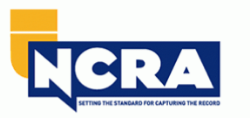Trial Presentation Comprehensive Tools for Effective Legal Advocacy
Trial Presentation Comprehensive Tools for Effective Legal Advocacy
Blog Article
Mesmerize the Court: Crucial Aspects of a Powerful Test Presentation
Essential components such as comprehending the target market, crafting an engaging story, and mastering verbal and non-verbal communication are vital parts of a reliable discussion. As these factors link, they create a natural technique that not just informs however likewise engages jurors on multiple degrees.

Understanding Your Audience
Understanding your target market is a crucial aspect of efficient test presentation. An effective presentation rests on the ability to realize the demographics, worths, and predispositions of jurors. This comprehension notifies just how arguments are framed, evidence exists, and sob stories are crafted, making certain that the message reverberates with the jurors on an individual level.
Research suggests that jurors come from varied histories and may have varying degrees of comprehending relating to legal proceedings. Additionally, understanding the jurors' prospective biases and life experiences permits the test presenter to expect arguments and address worries proactively.
Effective test presentation also involves observing jurors' reactions throughout the process. Engaging with jurors as people instead than a cumulative system is vital in fostering a strong connection in the court room.

Crafting an Engaging Story
Crafting a compelling story is important in guiding jurors through the complexities of an instance. A well-structured narrative not only simplifies complex legal concepts but additionally involves jurors on an emotional degree, making the info a lot more relatable and memorable.
This message ought to reverberate with the jurors' worths and experiences, promoting a connection that goes beyond simple truths. This chronological technique can aid jurors adhere to the progression of events, stressing cause and result.
Including human components-- such as individual tales or stories-- can further improve the narrative's effect. These elements stimulate empathy, allowing jurors to visualize the repercussions of the instance on realities. Additionally, employing a regular theme throughout the presentation reinforces the major argument, making it simpler for jurors to keep crucial points.
Inevitably, a compelling story changes a test discussion from a mere recounting of realities right into a persuasive tale that astounds the jury, motivating them to mull over with both reason and emotion.
Utilizing Visual Aids
Incorporating aesthetic help into a trial discussion can significantly enhance jurors' comprehension and retention of info. Visual products such as charts, diagrams, photos, and video clips can change intricate lawful concepts and proof right into easily absorbable formats. By engaging several detects, these help enable jurors to envision the case's crucial elements, making it easier for them to adhere to along and understand elaborate information.
Furthermore, properly designed visual help can stress vital points and emphasize partnerships in between different items of proof. As an example, timelines can effectively illustrate the sequence of events, while annotated pictures can make clear particular information pertinent to the instance. This not just aids in understanding yet additionally enhances the narrative presented by the attorney.
Overly intricate or cluttered visuals may overwhelm jurors and More about the author detract from the message. Inevitably, efficient aesthetic communication can be an effective device in encouraging jurors and helping them get to educated final thoughts.
Understanding Verbal Communication
Effective spoken interaction is essential in a test presentation, as it functions as the key methods whereby attorneys communicate their disagreements and attach with jurors. Mastering this skill involves clearness, persuasion, and involvement. Lawyers have to express their points clearly and concisely, avoiding lawful jargon that may perplex jurors. Simpleness in language cultivates understanding and assists jurors understand intricate issues offered throughout the test.
Additionally, tone and pacing substantially effect exactly how messages are received. A positive tone shares authority, while ideal pacing permits jurors to take in information without feeling overwhelmed. Lawyers need to likewise vary their vocal inflections to highlight essential factors and preserve jurors' interest throughout the discussion.
Furthermore, the organization of spoken debates is essential. Structuring the narrative practically and coherently helps jurors comply with the lawyer's line of reasoning, making it much easier for them to retain essential information. Utilizing influential strategies, such as storytelling, can likewise enhance the emotional resonance of the arguments provided, consequently developing an extra profound connection with jurors.
Ultimately, mastering verbal communication not only reinforces a lawyer's instance however likewise cultivates depend on and rapport with the court, considerably improving the possibilities of a positive judgment.

Involving With Body Movement
Nonverbal communication plays a vital function in trial discussions, typically sharing messages that words alone can not express. Body language, including gestures, stance, face expressions, and eye contact, considerably affects just how jurors perceive the reputation and sincerity of the presenter. A a knockout post positive stance, with shoulders back and an open stance, can impart trust fund, while closed-off body movement may recommend defensiveness or unpredictability.

Face expressions should reflect the emotions related to the instance, reinforcing the narrative existing. For example, an honest expression throughout an emotional minute can evoke compassion and strengthen the sob story. Eventually, grasping body movement is vital for reliable trial discussions, as it enhances spoken communication and establishes a compelling visibility that reverberates with the court.
Final Thought
To conclude, astounding the court demands a critical method that includes understanding the target market, crafting an engaging story, making use of visual aids, mastering verbal communication, and engaging through body movement. Each element plays an essential duty in developing an effective trial presentation that reverberates with jurors on both emotional and intellectual degrees (trial presentation). By incorporating these parts properly, attorneys can substantially boost their capability to persuade and affect court decision-making
Report this page